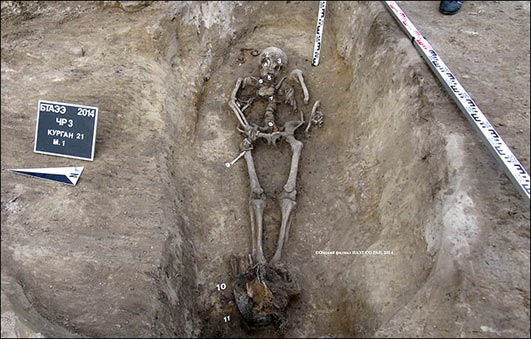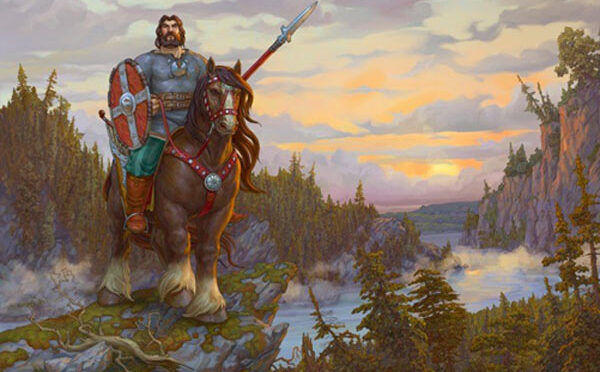1,000-year-old grave of Siberian warlord horseman who lost arm in battle revealed
Archaeologists in Siberia have unearthed an elaborate grave belonging to an 11 th century warlord horseman who lost his left arm in his final battle, according to a news release in the Siberian Times .
The ancient warrior towered nearly a foot over his peers and was buried with a bear fang on his face, a symbol of his great strength.
Archaeologists discovered the remains of the man they named Bogatyr (‘Great Warrior’) in an ancient burial mound near Omsk in south western Siberia. An analysis of the bones suggests that the warrior had been trained in combat since childhood.
He belonged to the tribes of the Ust-Ishim culture, which were the ancestors of modern indigenous Khanty and Mansi peoples. These people were known to have been small in stature at the time, so the fact that Bogatyr measured 180cm would have made him appear like a giant.
The features of Bogatyr’s grave and the fact that his lower arm and hand were buried with the rest of the corpse, but severed from it, suggests that this Siberian warrior died in battle.
“Our warrior was killed in the battle. His left arm was severed in battle and placed near the body, and his shoulder was broken. But he was buried according to ritual which means he was a respected person.
All the elements of the ritual give us an opportunity to discover historical and political conditions of the epoch the warrior lived in,” said archaeologist Mikhail Korusenko, who led the expedition.

Bogatyr was buried with mirror and a bronze plate, which lay on his chest, 25 war arrows made from metal and bone that are still sharp, bronze tools, a bronze cauldron with the remains of food to nourish him in the afterlife, a horse’s bridle, suggesting he was a horseman, and remains of leather and fur, which may have formed part of his clothing or were the quiver decorations on his arrow.
The researchers believe that the mirror, which measured 10cm in diameter, may have been worn as an amulet and was placed on his chest as a tool to communicate with the gods.

Bogatyr was buried with a death mask, most of which had disintegrated. However, researchers were able to determine that the mask was originally comprised of fabric and included pockets over the eyes and mouth which contained metal fish figurines.
The fish were deliberately snapped in half, which may have been a ritualistic act that held some religious importance. Next to his nose was the massive fang of a bear, a sign of his strength and power, according to Mr. Korusenko.

Mr. Korusenko said that the grave of the warrior is “a truly unique find which would allow us to fill pages about not only the cultural, but the military history of this part of the region, as we know very little about this particular period of time.”
